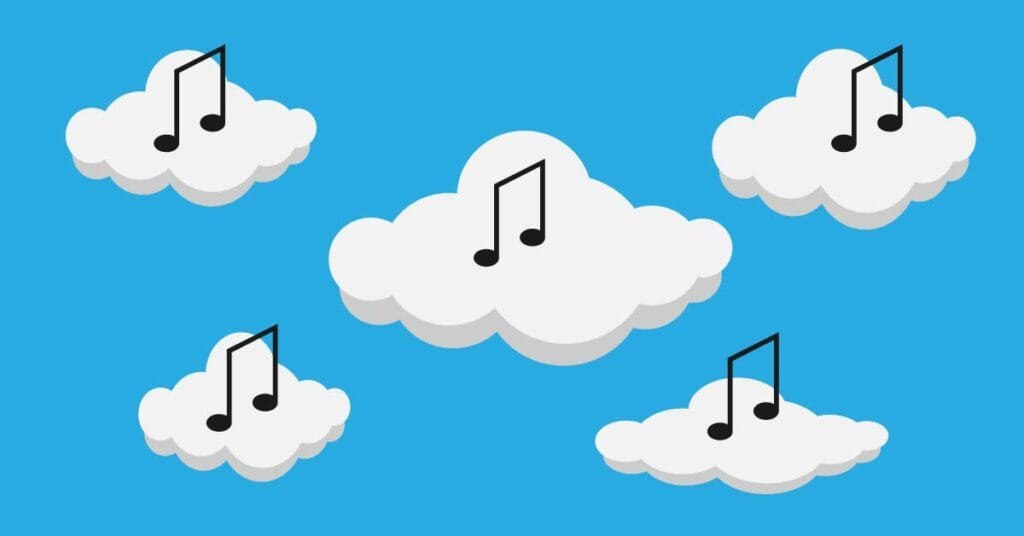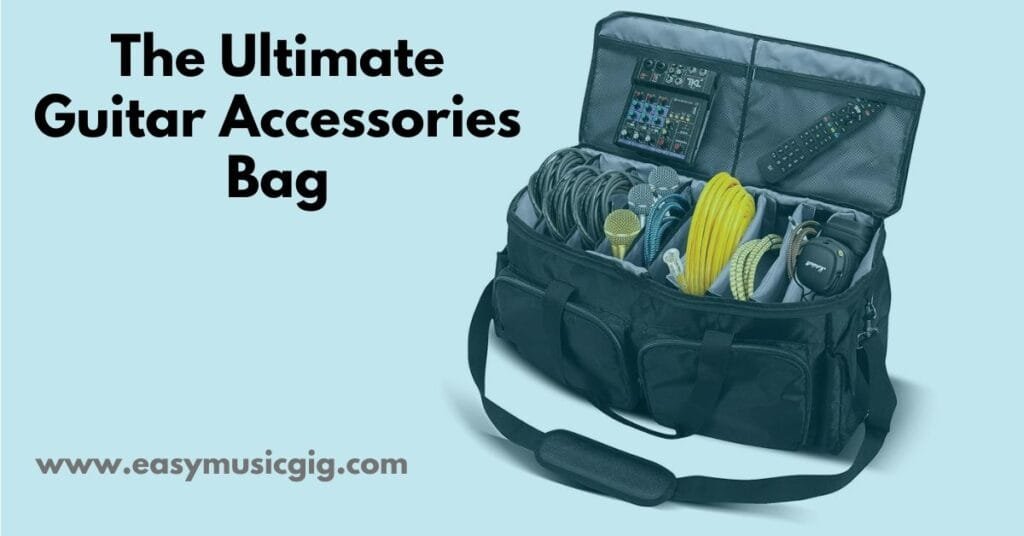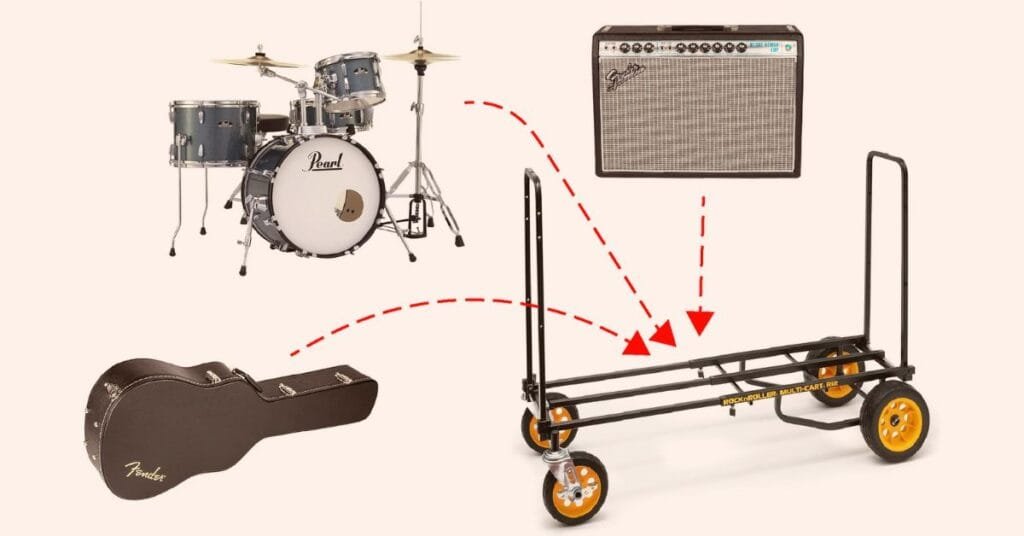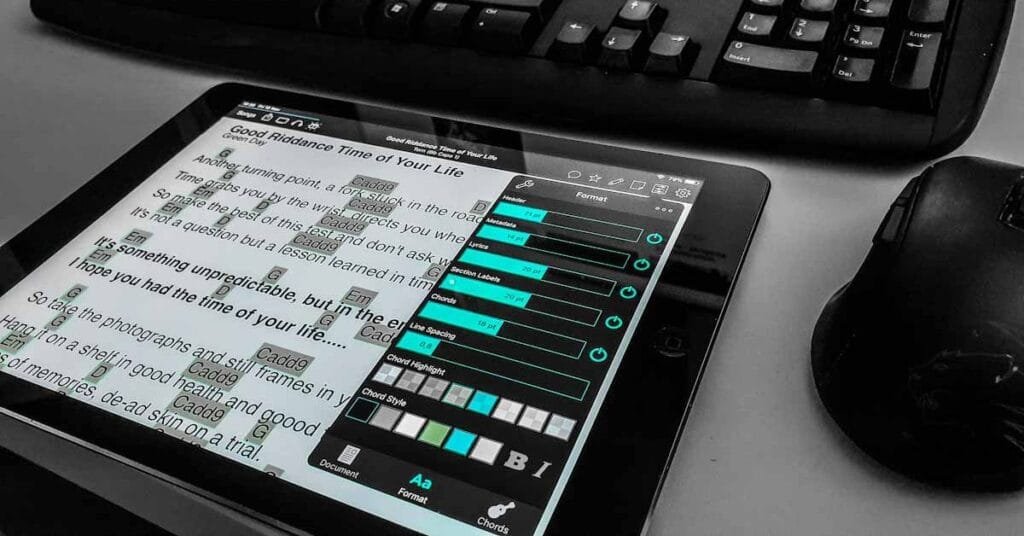Musicians’ cloud essentials – 9 things every gigging musician needs on the cloud
What do Musicians Need on Their Cloud?
Have you ever arrived at the venue where you are playing a gig and realized you’re missing something that could have been saved in a digital format? We all know that everything that is digital can be stored on a cloud and be accessible at any time from anywhere. The cloud has emerged as an indispensable tool for musicians. Having all that you could potentially need in this kind of situation makes your gigs much less stressful. Here is a list of 9 musician’s cloud essentials that every musician should have on the cloud. FYI, I’m not writing about Bryan Adams’ song “Cloud Number Nine”!
1. App backup
If you are using an app like Onsong, iReal Pro, or forScore for sheet music, lyrics, chords, or setlists, it has an automated cloud-based backup already integrated into its features. OnSong has its backup on Dropbox, so if you ever have trouble with your iPad or even worse, lose it, you will be able to upload the latest backup of all your files from Dropbox. Check your cloud regularly for backups, you never know when backup settings have been changed.
2. Digital copies of paper-based content
Some people still like to use the good old-fashioned way to store and use lyrics or sheet music – printed on paper. But that still doesn’t make things 100% safe. The binder can be accidentally left at home or in another bag somewhere else. It’s a good practice to take pictures of all of the music sheets that you regularly use for concerts and have them saved in a dedicated file on cloud storage. Every musician’s Cloud Essentials list has to have these documents. If needed, you can always access and view them on your mobile phone or someone’s tablet to save the show.
3. Contacts and notes
Of course, we all have our contacts on our phones and most likely stored via Google, even categorized. But for a musician who is contacting lots of potential places to play like bars, restaurants, clubs, hotels, festivals, and private gigs, the cloud can make things work more smoothly.
Every time you call someone, or send them an email, you should note what is the response and current status of that communication. You could have that somewhere in your phone, but having a cloud backup, or even better, a workspace is much better. Spreadsheets are great for that purpose, and if they are in the cloud, you can work from any device, so it’s not all about losing a device with your valuable data.
4. Offer templates
If you are the manager for your band you will know what I’m talking about here. Sending an offer for your band isn’t that easy, especially if you make offers for different types of venues, occasions, or variations of your band. Sometimes it’s difficult to remember all the information to write such an offer. Creating templates for your different types of offers is a great way to make things simple. Have them stored in the cloud, so you can access them any time you have to send an offer.
5. Your music and promo materials
When going to gigs my band has a couple of promo CDs that we give away to fans. Sometimes we forget to refill, s**t, that’s so unprofessional! Sharing your band’s music from the cloud has become a seamless way to connect with your audience. Having the music on the cloud is the perfect way to send your promo music to your fans. Whether you have your music in the form of an album in a file on your Google Drive or it’s shared through popular services like Soundcloud, Spotify, or YouTube, the cloud provides a centralized hub that connects your fans with your work.
6. Riders
“In theater, dance, and live musical performances, a rider is a set of requests or demands that a performer sets as criteria for performance, which are typically fulfilled by the hosting venue.” – Wikipedia
There are two types of riders:
- Hospitality – requests from the performers related to comfort: foods, beverages, fresh towels,…
- Technical: includes a list of all the inputs that the band will need, additional effects,..
The technical rider also includes a diagram (stage plot) showing the position of every musician, so the sound engineer knows where to place all the microphone stands, and monitors,…
Having Your band’s riders on the cloud is essential. That way, you will always be able to share them when needed.
7. Performing and Mechanical rights organizations (PRO and MRO) documentation
Performing Rights Organizations are organizations that collect royalties on behalf of songwriters and publishers. They are a link between the owners of composition copyrights and the music users (radio, local businesses broadcasting music in the store, streaming services). They technically deal, primarily, with royalties due for the public broadcast of music.
Mechanical royalties organizations, on the other hand, deal with royalties related to music that is sold, downloaded, and streamed in physical and digital formats.
Every country has different organizations, and many have more than one. Some of the most popular organizations in the world are ASCAP, BMI, SESAC, PRS for Music, and Music Reports.
When we play gigs at venues, the venue pays a fee to these organizations. Authors of the music that is played at these venues are paid from this fee. Data that is collected from these performances is necessary for distributing this fee to the authors. Data usually includes song title, author, and duration. Information about the band that played the gig could also be included in the forms that are sent to PROs. Writing down or even filling out a digital form with all this information before or after a gig is frustrating, so having it already filled out in a digital format on the cloud makes your gig so much easier.
8. Digital Audio Workstations (DAWs) in the Cloud
Traditionally producers work with DAWs that are on specific devices in a fixed location like a home studio. Cloud-based DAWs like BandLab, Amped Studio, or Soundtrap allow artists to create, edit, and produce music directly from their browsers instead of a fixed device and location. Nowadays, fast internet makes it possible to run DAWs completely online. This flexibility allows musicians to work on their projects whether they’re in the studio or on the road. When that moment of inspiration hits you next time while you’re on tour, don’t worry, just turn on your tablet from your hotel room, open your favorite DAW online, and produce your next chart-topping hit.
9. Collaboration tools
Cloud-based collaboration tools are a game changer for musicians, and the best thing is, they’re in real-time. The two biggest cloud-based platforms Microsoft 365 and Google Workspace provide shared document editing, enabling multiple musicians or producers to work on production notes, sheet music, and lyrics simultaneously. This reduces the need for constant file exchanging after every edit which leads to a more efficient creative process.
Collaboration tools like Sessionwire and Soundtrap are cloud-based music production platforms. They allow musicians and producers to collaborate directly in their web browsers.
We’ve reached the end of this list of musician’s cloud essentials. If you have something that isn’t mentioned in this list, please leave a comment below. Let us know what you keep stored on the cloud.



